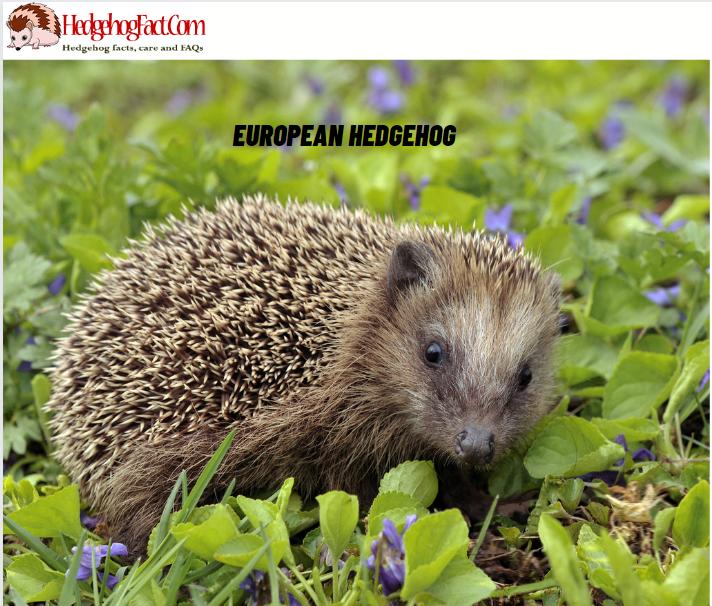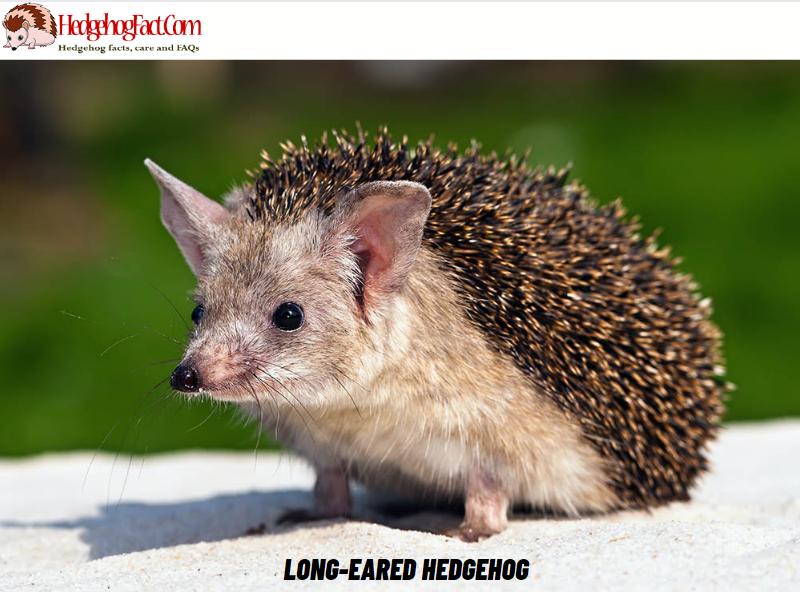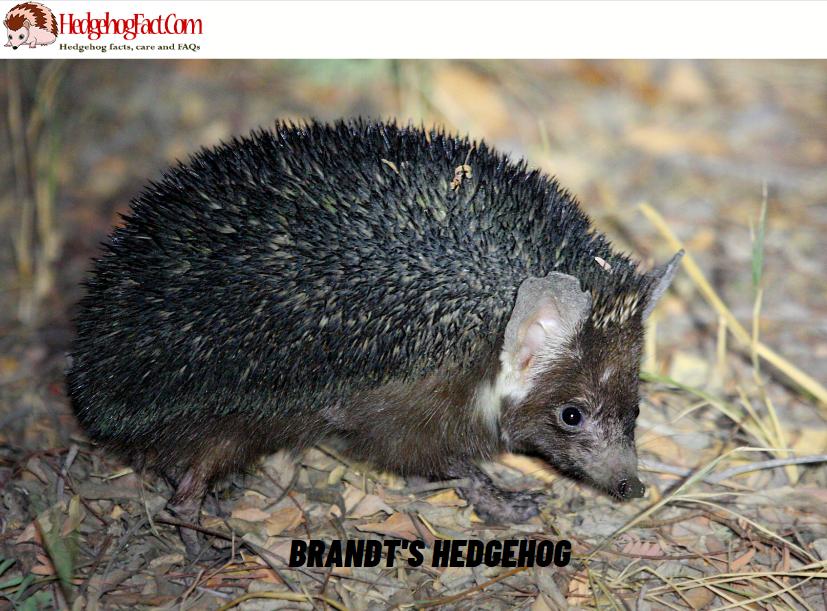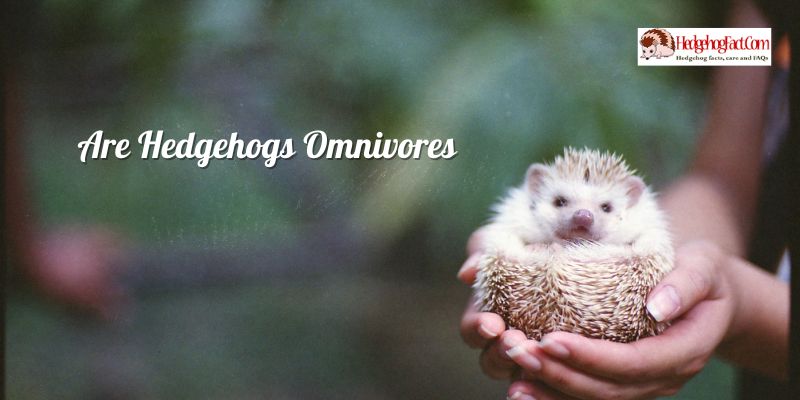Hedgehogs are small, spiny mammals belonging to the subfamily Erinaceinae, in the eulipotyphlan family Erinaceidae. There are 17 species of hedgehogs in five genera found throughout Europe, Asia, and Africa, and in New Zealand by introduction. In Different Between Types Of Hedgehogs, we will discuss different types of hedgehogs, their characteristics, and other interesting facts.
African Pygmy Hedgehog
The African Pygmy Hedgehog, also known as the “four-toed hedgehog,” is the first domesticated hedgehog breed and one of the most popular types of hedgehogs sold as pets. They are solitary, nocturnal, and energetic animals that can run as much as five miles a night. These hedgehogs have small size, measuring around six inches and weighing 350-700 grams. They have a lifespan of four to six years.
In the wild, African Pygmy Hedgehogs are primarily nocturnal and feed on a variety of insects, small mammals, and vegetation. In captivity, they can be fed a diet of commercially available hedgehog food, insects, and vegetables.

African Pygmy Hedgehogs make good pets for individuals or families who have the time and resources to properly care for them. They require a cage with plenty of room to move around, a warm and comfortable environment, and regular cleaning and maintenance. It is also important to handle them regularly to ensure that they remain socialized and friendly.
It is important to note that owning a pet hedgehog is illegal in some countries or regions, so it is important to check local laws and regulations before getting one as a pet.
European Hedgehog
The European Hedgehog, also known as the common hedgehog, is perhaps the most widespread species of hedgehog. It is native to Europe and parts of Asia and Africa. They have a lifespan of four to seven years and are known for their brown spiny coat and a black nose. European hedgehogs are nocturnal and can hibernate for long periods in the winter.
In the wild, European Hedgehogs are primarily nocturnal and feed on a variety of insects, small mammals, and vegetation. They are known for their ability to roll into a tight ball when threatened, using their spines to deter predators.

European Hedgehogs have become popular pets in some countries, although it is important to note that they are wild animals and require specialized care. In some regions, the species is also hunted for its meat and used in traditional medicine.
Unfortunately, European Hedgehog populations have been declining in many parts of their range due to habitat loss, road accidents, and other threats. It is important to take steps to protect and conserve this species to ensure that it can continue to thrive in the wild.
Desert Hedgehog
The Desert Hedgehog is one of the smallest hedgehog species, with adults only reaching about 6 to 8 inches in length. Despite their small size, they are quite hardy and have a great defense mechanism.
When threatened, their muscles pull the outer layer of skin around the body, resulting in a spiny ball. These hedgehogs are found in North Africa and the Middle East, and they can survive in arid desert environments.

The Desert Hedgehog is sometimes kept as a pet, although it is important to note that they require specialized care and can be difficult to keep in captivity. In some regions, the species is also hunted for its meat and used in traditional medicine.
Like other species of hedgehog, the Desert Hedgehog faces threats from habitat loss, road accidents, and other human activities. Conservation efforts are needed to protect this species and ensure that it can continue to thrive in its natural habitat.
Long-eared Hedgehog
The Long-eared Hedgehog is a small species of hedgehog found in Central Asia and the Middle East. They have long ears and a light brown coat with a dark stripe down the back. These hedgehogs are nocturnal and can hibernate for long periods. They have a lifespan of six to eight years and weigh around 250 grams.
The Long-eared Hedgehog is sometimes kept as a pet, although it is important to note that they require specialized care and can be difficult to keep in captivity. In some regions, the species is also hunted for its meat and used in traditional medicine.

Like other species of hedgehog, the Long-eared Hedgehog faces threats from habitat loss, road accidents, and other human activities. Conservation efforts are needed to protect this species and ensure that it can continue to thrive in its natural habitat.
Indian Long-eared Hedgehog
The Indian Long-eared Hedgehog is another species of long-eared hedgehog found in India, Pakistan, and Nepal. They have a brownish-yellow coat with a white underbelly and long ears. These hedgehogs are nocturnal and have a lifespan of five to seven years.

The Indian Long-eared Hedgehog is not commonly kept as a pet, and little is known about its behavior and requirements in captivity. In some regions, the species is hunted for its meat and used in traditional medicine.
Like other species of hedgehog, the Indian Long-eared Hedgehog faces threats from habitat loss, road accidents, and other human activities. Conservation efforts are needed to protect this species and ensure that it can continue to thrive in its natural habitat.
Brandt’s Hedgehog
Brandt’s Hedgehog, also known as the four-toed hedgehog, is a species of hedgehog that is native to the savannas and grasslands of eastern and southern Africa. It is named after the German naturalist Johann Friedrich von Brandt, who first described the species in 1835.

Brandt’s Hedgehog is a small, spiny mammal that typically weighs between 300 and 600 grams and has a body length of around 20 centimeters. It is covered in sharp, pointed spines that protect it from predators, and has a pointed snout and short, stubby legs.
Like other hedgehogs, Brandt’s Hedgehog is primarily nocturnal and feeds on a variety of insects, small mammals, and vegetation. It is also known to roll into a tight ball when threatened, using its spines to deter predators.
Brandt’s Hedgehog is a popular pet in some countries, although it is important to note that they require specialized care and can be difficult to keep in captivity. In some regions, the species is also hunted for its meat and used in traditional medicine. Due to habitat loss and other threats, the species is considered to be of conservation concern in some parts of its range.
Hopefully the article Different Between Types Of Hedgehogs will provide you with useful information.





